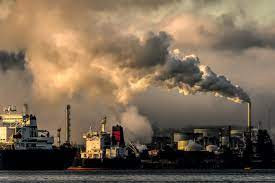Stromatolites found in the Red Sea offer new clues to the earliest life on Earth

Stromatolites are ancient structures formed by layers of algae that grow toward the light and precipitate carbonates.
First appearing 3.48 billion years ago, these formations dominated Earth as the sole living carbonate factory for nearly three billion years.
They played a crucial role in the Great Oxygenation Event, which introduced oxygen to our atmosphere and drastically altered Earth’s environment.
Algae layers and stromatolites
Stromatolites are layered structures formed by the activity of algae, specifically cyanobacteria. These ancient formations date back 3.48 billion years and are some of the oldest evidence of life on Earth.
Cyanobacteria in stromatolites perform photosynthesis, capturing sunlight and producing oxygen, which was crucial in transforming Earth’s early atmosphere
Stromatolites thrived for billions of years, dominating Earth’s shallow marine environments and playing a pivotal role in the Great Oxygenation Event around 2.4 billion years ago.
This event introduced significant amounts of oxygen into the atmosphere, paving the way for more complex life forms to evolve.
Despite their ancient origins, stromatolites are not just relics of the past. They can still be found today in extreme environments where other life forms struggle to survive.
Decline and resurgence of stromatolites and algae layers
Stromatolites initially thrived, eliminating competition with their oxygen production. However, as more life forms adapted to the oxygen-rich atmosphere, stromatolites began to decline.
Today, they appear in the geological record primarily after mass extinctions or in extreme environments.
“The bacteria are always around, but they don’t usually get the chance to make stromatolites,” explains Volker Vahrenkamp, the author of a new study in Geology. “They are largely outcompeted by corals.”
Today, stromatolites are found in niche environments like hypersaline marine settings (e.g., Shark Bay, Australia) and alkaline lakes.
Until recently, the only known modern analogue to the biologically diverse, shallow marine settings of the Proterozoic era was the Exuma Islands in the Bahamas.
Surprising discovery in the Red Sea
This changed when Vahrenkamp discovered living stromatolites on Sheybarah Island, located on the northeastern shelf of the Red Sea in Saudi Arabia.
Initially studying tepee structures — salt crust domes visible from space — Vahrenkamp unexpectedly came across the stromatolite field.
“When I stepped on them, I knew what they were,” says Vahrenkamp. “It is 2000 km of carbonate platform coastline, so in principle it is a desirable area to look for stromatolites… but then, it is the same in the Bahamas, and yet there is only one small area where you find them.”
Unique environmental conditions
Sheybarah Island features an intertidal-to-shallow subtidal setting with alternating wet and dry conditions, extreme temperature variations from 46.4°F (8°C) to over 118.4°F (48°C), and oligotrophic conditions, similar to those in the Bahamas.
These environmental conditions suggest that other stromatolite fields might exist nearby.
Vahrenkamp and his team are currently exploring this possibility, but finding these algae structures can be challenging due to their small size, about 15 cm across.
Understanding stromatolite growth
The Sheybarah Island field contains several hundred stromatolites formed by algae layers, ranging from well-developed examples to more sheet-like formations.
“Perhaps they could be juvenile,” hypothesizes Vahrenkamp, “but we don’t know what a baby stromatolite looks like. They must start small, but we don’t know.”
Implications for early life and beyond
Vahrenkamp’s discovery provides an opportunity to better understand algae structures like stromatolites, their formation and growth.
This research can offer insights into early life and ocean evolution on Earth and aid in the search for life on other planets, such as Mars.
Stromatolites, as some of the first life forms on Earth, offer a promising avenue for understanding what life might look like on Mars and how we could recognize it.
International Research Excellence and Best Paper Awards
Nomination Link: https://x-i.me/bpanom12
Visit: https://bestpaperawards.com/
#earth
#nature
#planet
#environment
#sustainability
#climatechange
#earthday
#savetheplanet
#ecofriendly
#green
Facebook: www.facebook.com/profile.phpid=100087106114908
Twitter : twitter.com/bestpaperaward
Pinterest : in.pinterest.com/bestpaperaward
Linkedin : www.linkedin.com/in/esha-gupta-18b2b4245
Instagram: www.instagram.com/eshagupta__2022/



Comments
Post a Comment